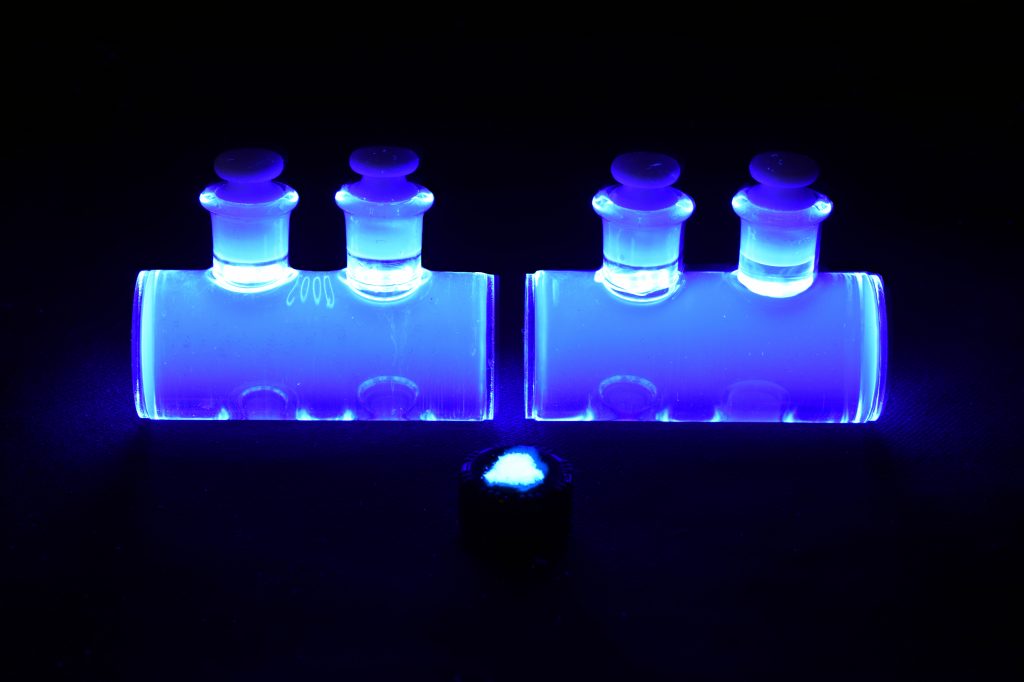Hybrid Scintillators for Neutron Discrimination
Sandia National Laboratories has developed a class of hybrid liquid or gel scintillators for the efficient detection of neutron radiation from nuclear threat materials. Scintillators have proven very useful in the differentiation of the unique radiation emitted by ionizing particles. When electrons and ions recombine in a luminescent material such as a scintillator, a technique called pulse-shape discrimination may be used to differentiate the various responses of the particles. However, standard formulations for liquid scintillators are based upon flammable or combustible solvents that require very careful handling and storage procedures. Alternative designs based on less flammable solvents possess some of the same packaging and storage constraints while exhibiting decreased performance in large-scale applications.

Sandia’s hybrid scintillators allow for flexibility in their designs, but all consist of three key materials that create a scintillator that is stable, low-cost, scalable to large sizes. The hybrid scintillator design is comprised of a surfactant that reduces the surface tension of a material in which it has been dissolved; a polar hydrogen-bonding solvent that reacts with the surfactant; and a luminophore, a material that creates luminescence in a compound. The surfactant reacts with the polar hydrogen-bonding solvent, creating a homogeneous mixture while also stabilizing the domains of the luminophore, catalyzing the scintillation. Stable lipophilic domains enable intermolecular energy transfer, which is necessary for a high scintillation efficiency and pulse-shape discrimination. The various expressions of this design each detail a scintillator that allows neutron/ gamma pulse-shape discrimination to be performed while decreasing costs and hazards.
Benefits
- High sensitivity detection of special nuclear materials
- Increased stability decreases impurities, environmental hazards and costs
Applications and Industries
- Nuclear nonproliferation
- Radiation detection
- Homeland security
- High-energy physics
SD#12254
Published7/16/2015
Last Updated1/15/2025